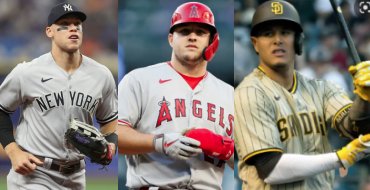Because of the infinite supply of trends, the Kentucky Derby is simultaneously interesting and challenging to handicap. There are three weeks between the last of the prep races and the Derby. For people who are interested in the Derby, that is a long time to wait. To fill that time, they analyze the race from a hundred different angles and see trends everywhere. When trying to sort out the trends that matter from the ones that don’t (which are the large majority) here are four questions to consider:

How established is the trend? – With most races consisting of 20 horses, there are a whole lot of horses from past races that you can draw trends from. That means anyone with a basic understanding of statistical analysis and some old race programs can come up with as many different trends. For example, after Mario Gutierrez won the 2012 Kentucky Derby aboard I’ll Have Another, I could say that every jockey that has spent time throughout the year at Hastings Park in Vancouver before appearing in their first Derby has won the race. That would be completely true, but totally meaningless. Hastings is a minor league track and Gutierrez is the first who fits this trend – and quite likely, the last. Before you trust any trend, you need to be sure that it has been relevant several times in the past, and that the circumstances of the trend aren’t so obscure as to be irrelevant. For example, the trend that a horse that has not raced as a two-year-old has not won the race since 1882 has been established through many years, over many different eras of racing, and has been tested many times. That’s an established trend.
How big is the sample size? – Would you have more faith in something that happened two out of three times, or 200 out of 300 times? The percentages are the same, but anyone who understands even basic statistics knows that the bigger sample size allows you to be far more confident. A bigger sample size doesn’t mean that the trend is foolproof, or that it predicts anything about the future, but it certainly has a better chance to do so. With any Derby trend you need to look back at how many horses fit into this trend – the size of the sample. You also need to look at the timeline of that sample. For example, if there is a nice sample size of 50 horses that might sound conclusive. However, If that has occurred over 120 years, then that trend wouldn’t be nearly as powerful as if it had occurred over the last 20 years of the race.
Is it a core trend? – There are some trends that are core to a horse’s performance in the race, and others that are more trivial and have less of an impact on the races outcome. The trend that a horse hasn’t won without racing as a two-year-old since 1882 is, as we have discussed, a core trend. The reasons for it are clear and significant – without racing at two, a horse lacks the experience and foundation of endurance required to compete against horses that have had those advantages. If a horse wasn’t ready to race at two then it’s likely to have physical, mental health or maturity issues that should be a concern. That doesn’t mean a horse that hasn’t raced at two will never win the race, or that you should never bet on one, but that the trend is strong, significant, and should be considered in your handicapping. For every core trend like this one, there are many that have far less to do with the direct outcome of the race. Trends like the prep races the horses ran in, the types of equipment they use, and so on have less to do with the way the horse is able to run or how they can be expected to perform. These examples are less significant as a trend. When looking at trends bettors need to be experienced at separating the ones that will have a real impact on the race from those that only appear to. This is very important because in any given edition of the race there will be many trends you can identify and point to, and those trends will point you to several horses in the field. Only by separating the tendencies that are likely to impact the outcome of the race can you hope to draw useful knowledge from the trends.

How public is the trend? – The more compelling a trend sounds, and the more media coverage it gets leading up to the race, the more of an impact it is going to have on public bets. There is a massive amount of public money bet on the Derby – dramatically more than in any other race – so a compelling trend can have a huge impact on where the odds wind up at post time. In short, the less public a core trend is, the more potentially useful it could be.






